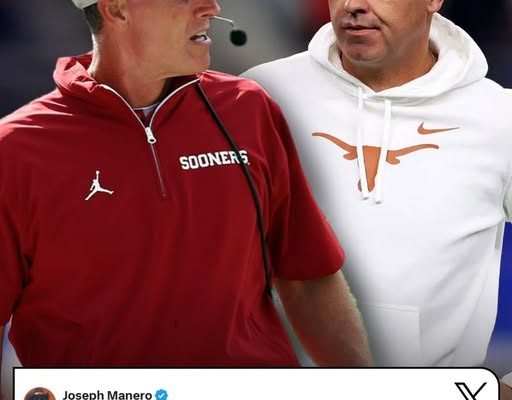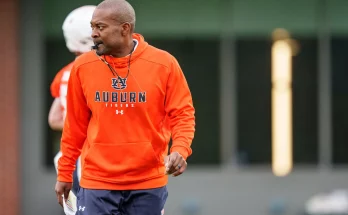Why Fans Dislike the Texas Longhorns and Oklahoma Sooners for Very Different Reasons: A Deep Dive into College Football Rivalries and Regional Sentiments
The world of college football is rife with passionate rivalries, fervent fan bases, and deep-rooted traditions that fuel not only the excitement on the field but also the intense emotions surrounding teams and their legacies. Among the most iconic and polarizing programs in the sport are the Texas Longhorns and the Oklahoma Sooners—two storied institutions whose rivalry has shaped the culture of college football in the American South and beyond. Yet, despite their longstanding competitiveness and intertwined histories, the reasons people harbor dislike for these two programs are remarkably distinct, rooted in differing cultural, historical, and stylistic factors. Understanding these divergent sentiments requires a nuanced exploration of the teams’ identities, fan behaviors, regional influences, and the broader social dynamics that contribute to their contrasting reputations.
At first glance, the Texas Longhorns and Oklahoma Sooners might appear to be two sides of the same coin, given their geographic proximity, historic rivalry in the Red River Showdown, and consistent prominence on the national stage. Both programs boast multiple national championships, boastful fan bases, and deep connections to their respective states’ identities. However, the nature of the animosity directed at each team is shaped by unique narratives that distinguish the two in the eyes of fans, rivals, and media alike. These differences reflect not only on-field performances but also off-field perceptions, cultural symbolism, and historical developments within college football and the regions they represent.
The Texas Longhorns, representing the University of Texas at Austin, often draw criticism and dislike for reasons tied to their image as a symbol of elitism, entitlement, and perceived arrogance. Texas football has long been associated with grandiose expectations, immense financial resources, and a culture that sometimes projects an air of superiority both within the Big 12 Conference and nationally. The Longhorns’ large stadium, the iconic burnt orange brand, and the program’s legacy of success contribute to a perception that Texas operates from a place of privilege and dominance. This perception can create a sense of resentment among other fan bases and neutral observers who view the Longhorns as embodying a “big fish in a small pond” mentality, expecting success as a birthright rather than earning it each season.
Critics of Texas often point to moments when the program’s lofty ambitions have not matched on-field results, exacerbating frustrations among fans and rivals. High-profile coaching hires, multimillion-dollar contracts, and extensive media coverage have set expectations sky-high, so when the Longhorns falter or fail to secure championships, the backlash is especially sharp. Additionally, some view Texas as emblematic of the commercialization and corporate influence permeating college football, where tradition and local community sometimes take a backseat to television deals, merchandise sales, and national branding. This blend of perceived entitlement and commercialism contributes to why many football fans—even those without direct ties to rival schools—express disdain for the Longhorns.
On the other hand, the Oklahoma Sooners’ dislike factor often stems from a different set of cultural and historical contexts. Oklahoma football, while similarly successful and prestigious, is frequently perceived through the lens of its fierce rivalry with Texas and its identity as a blue-collar, hard-nosed program. While Oklahoma fans are fiercely proud and passionate, critics sometimes paint the Sooners as emblematic of a certain stubbornness or traditionalism that can seem insular or resistant to change. Oklahoma’s identity as a program deeply rooted in its state’s heritage often comes across as both a strength and a source of friction. Fans outside Oklahoma sometimes see the Sooners as a team that clings tightly to its history and regional identity, occasionally at the expense of adapting to the evolving landscape of college football.
Furthermore, Oklahoma’s history of success, combined with periods of struggle or transition, fuels complex sentiments among observers. The Sooners’ reputation for resilience and toughness on the field often garners respect but also frustration from rivals who see the program as difficult to beat or overly physical. There is also an element of rivalry envy, where fans of other programs view Oklahoma as a team that sometimes benefits from historical prestige despite fluctuating recent performances. Unlike Texas, which is sometimes criticized for excess, Oklahoma’s perceived faults tend to revolve around stubborn adherence to tradition and a somewhat insular culture that contrasts with more nationally focused programs.
The fan bases themselves contribute significantly to the distinct reasons for dislike. Texas Longhorns supporters are often characterized by their confidence, pride in their program’s national visibility, and a sometimes confrontational approach to rivalries. This swagger can rub opposing fans the wrong way, fueling perceptions of arrogance and entitlement. Conversely, Oklahoma fans are typically viewed as intensely loyal, deeply connected to their state’s identity, and passionate in ways that emphasize toughness and perseverance. While this garners respect in many circles, it can also foster a sense of rivalry fatigue or frustration, particularly among fans of schools that frequently face the Sooners in critical games.
Media narratives and cultural representations further shape these divergent perceptions. The Longhorns, with their prominent media market in Austin and significant television presence, often feature in stories about big-money college football and the pressures of high expectations. The Sooners, while also a major program, tend to be portrayed more through the lens of tradition, rivalry, and regional pride. These portrayals influence how fans and neutral observers interpret the programs’ identities and contribute to the different types of dislike each team inspires.
In the broader context of college football’s evolution, the contrasting reasons for dislike of Texas and Oklahoma also reflect shifting trends in the sport. The Longhorns’ embrace of commercialization, recruitment strategies, and national branding mirrors a trend toward big-market programs seeking dominance on a grand scale. Oklahoma’s more traditional, rivalry-driven identity reflects college football’s roots in regional pride and community connection. As the sport continues to evolve, these tensions highlight the balance programs must strike between honoring tradition and adapting to new realities.
The distinct reasons for disliking these two programs also manifest in how their fans interact with one another and with other rival schools. Texas fans often take pride in their program’s national prominence and look down on those who question their stature, which can provoke backlash from other fan bases. Oklahoma fans emphasize loyalty, toughness, and a strong sense of identity tied to their state and history, which can come across as insular or overly defensive to outsiders. These dynamics create a complex web of emotions and interactions that add rich layers to college football rivalries.
Despite the differences, both programs share a common thread of passionate support, historic success, and a profound impact on the college football landscape. Their rivalry remains one of the sport’s most compelling narratives, not only because of what happens on the field but also because of the cultural and emotional forces that shape how fans perceive and relate to each team. Understanding the distinct reasons why people dislike Texas and Oklahoma enriches the appreciation of college football’s vibrant, multifaceted culture and underscores why these programs continue to captivate and divide fans across the country.
As college football moves forward into new eras of playoff expansions, conference realignments, and shifting media landscapes, the Texas Longhorns and Oklahoma Sooners will undoubtedly continue to be focal points of discussion, admiration, and critique. Their differing reputations reflect broader themes in the sport and society, making their story not just about wins and losses but about identity, community, and the enduring power of sports to inspire deep emotion and loyalty.
In the end, the very reasons fans dislike the Texas Longhorns and Oklahoma Sooners so differently serve as a testament to the unique identities these programs have forged over decades. Whether it’s the perception of Texas as a symbol of entitlement and commercial excess or Oklahoma’s image as a tough, traditional powerhouse with a fiercely loyal fan base, both stories are essential to the rich tapestry of college football rivalries. These contrasting narratives ensure that the rivalry remains vibrant, that debates continue to rage, and that the passion for the game and its teams will never fade.



